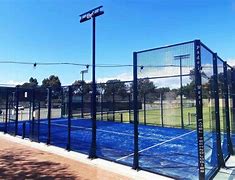

The Rise of Padel Tennis in China
Padel tennis, a sport that blends elements of tennis and squash, has seen a remarkable rise in popularity across the globe, and China is no exception. Originally developed in Mexico in the 1960s, the sport has gained traction in Europe and South America, and now its momentum is reaching Asian countries, particularly China. The appeal of padel tennis lies in its accessibility, social nature, and the minimal space required for courts, making it an ideal sport for urban environments.
What is Padel Tennis?
Padel is played in doubles on an enclosed court that is about one-third the size of a traditional tennis court. The game utilizes a solid racket with no strings and a balls that are similar but slightly different from regular tennis balls. The rules of padel tennis allow the ball to bounce off the walls, adding an exciting dynamic to the game. Players score points by hitting the ball over the net and ensuring it bounces in the opposing court, similar to tennis.
Growing Popularity in China
In recent years, substantial investments have been made to develop padel facilities around China. Major cities like Beijing, Shanghai, and Shenzhen are seeing the construction of modern padel courts that cater to the growing interest. Local clubs are beginning to organize padel tournaments, encouraging both amateurs and more experienced players to engage with the sport. As a result, not only is the sport gaining a fanbase, but it is also fostering a community around it.
One key factor in the sport's growth is its appeal to the younger demographic. Padel is often described as more approachable than tennis, which can be seen as a more technical and demanding sport. The social aspect of padel, where players frequently engage in doubles matches, makes it an attractive option for friends and family to play together, promoting a more casual and fun environment.

Cultural Integration and Promotion
With China’s booming fitness culture, padel tennis fits perfectly into the lifestyle that many are seeking. The government and sports organizations are actively promoting padel as part of their broader initiative to enhance public health through increased physical activity. Schools and universities are beginning to incorporate padel into their physical education programs, introducing young people to the game early on.
The promotion of international tournaments in China, as well as the presence of international players and coaches, has elevated the sport's profile and credibility. When local athletes see global stars participating in padel, it creates a sense of aspiration and encourages more people to take up the racket.
Challenges Ahead
Despite the growth, there are challenges that padel tennis must overcome in China. Awareness remains relatively low compared to more traditional sports, which means continued education and marketing are essential. Additionally, the construction of new facilities must keep pace with demand to ensure that players have access to quality courts.
Conclusion
The burgeoning scene of padel tennis in China signals not only a new sporting trend but also an opportunity for social engagement and community building. As more players pick up the racket, the sport is poised to create a significant impact on the country's sporting landscape. With proper support and promotion, padel tennis has the potential to become a mainstay in China's diverse sporting culture, embodying the spirit of fun, competition, and unity. As this captivating sport continues to expand its reach, players of all ages will find joy and excitement on the padel courts of China.
AI-Designed Paddle Racquet | GPT-4 Turbo Tech
Premium Paddle Racquet | AI-Optimized Design
Smart Padel Courts with GPT-4 Turbo AI
AI-Powered Paddle Racquet w/ GPT-4-Turbo Optimized
China Pro Ping Pong Paddle | Premium Spin Control
Premium AI-Enhanced Padel Court | GPT-4 Turbo Design